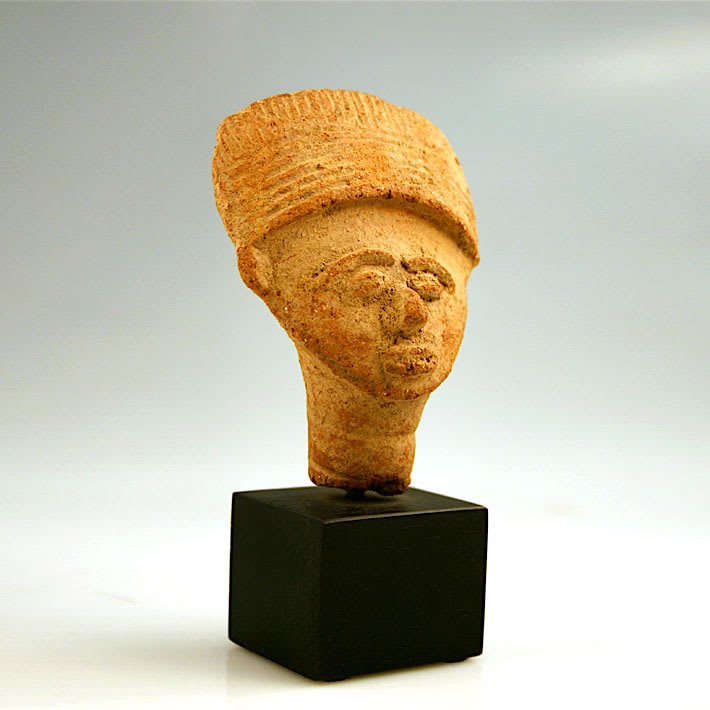Asante Terracotta Bust, Asante Terracotta Bust
Terracotta
height 9 cm
height 3 1/2 in
height 3 1/2 in
DJ.1076
Further images
The Ashanti/Asante are one of the many tribes that make up the Akan polity. They all share general cultural trends while maintaining separate tribal identities. Their society is highly ritualised,...
The Ashanti/Asante are one of the many tribes that make up the Akan polity. They all share general cultural trends while maintaining separate tribal identities. Their society is highly ritualised, with numerous gods under a main deity who varies according to the group in question (Onyame – the Supreme One – is the Asante deity), and a host of lesser gods (Abosom) who are mostly connected with the natural world (earth, ocean, rivers, animals etc). The society is ruled by Asantahenes, and a host of minor chiefs. The Ashanti live in the central portion of the country, and are one of the most important groups from the artistic point of view. Their Akuaba dolls are one of the most recognisable forms on the continent, while their fascination with gold (which the Akan consider a physical manifestation of life’s vital force, or “kra”) has given rise to a plethora of artefactual and artistic production.
Pieces such as this are comparatively uncommon, and were designed as grave markers for important chiefs. They were first used in the 16th century, and their use declined from the 18th century onwards. They were paraded through the streets at funerals and on commemoration days, then left on graves and shrines to receive prayers and libations. Studies have revealed varying cultural origins; the flat-faced versions are of a Kwahu origin, and most closely resemble the famous Akua’ba dolls (a certain resemblance to specific Bura pieces has also been noted, although this is perhaps coincidental). The other main style is influenced by the Fante and the Fomena-Adanse people.
Pieces such as this are comparatively uncommon, and were designed as grave markers for important chiefs. They were first used in the 16th century, and their use declined from the 18th century onwards. They were paraded through the streets at funerals and on commemoration days, then left on graves and shrines to receive prayers and libations. Studies have revealed varying cultural origins; the flat-faced versions are of a Kwahu origin, and most closely resemble the famous Akua’ba dolls (a certain resemblance to specific Bura pieces has also been noted, although this is perhaps coincidental). The other main style is influenced by the Fante and the Fomena-Adanse people.





